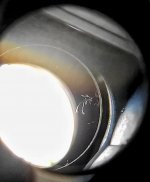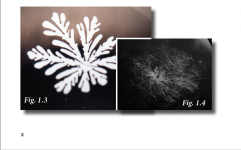I’ve had my 2018 Nikon EII 8x30 fogged up internally several times, the last time it displayed an odd looking «noodle patter» that was probably not fungus. However, yesterday while cleaning the lenses I spotted something worrying that I’m afraid this time is indeed fungal growth, is it?

I’m afraid the answer is yes. In that case, I guess this is something you can’t simply reverse, so, my questions are:
Any advice or comment is greatly appreciated, a true pity given that the small EII are one of my favourite binoculars 😔 At the moment I don't think this affects the view, but I'm concerned it might in the future, and also I'm worried it might spread to other non sealed Porro binoculars I have.

I’m afraid the answer is yes. In that case, I guess this is something you can’t simply reverse, so, my questions are:
- Is there anything you can do to stop it? At the moment they are in a zip bag with a couple of 25 g silica gel sachets.
- Is there any product I can put in the bag to “kill the fungus” and prevent it from spreading further? I don’t know, maybe something like a chemical treatment that is released in a sealed bag and left to work for hours/days like the ones used to kill some pests?
- Can this be "undo"/totally cleaned by a professional?
Any advice or comment is greatly appreciated, a true pity given that the small EII are one of my favourite binoculars 😔 At the moment I don't think this affects the view, but I'm concerned it might in the future, and also I'm worried it might spread to other non sealed Porro binoculars I have.
Last edited:










